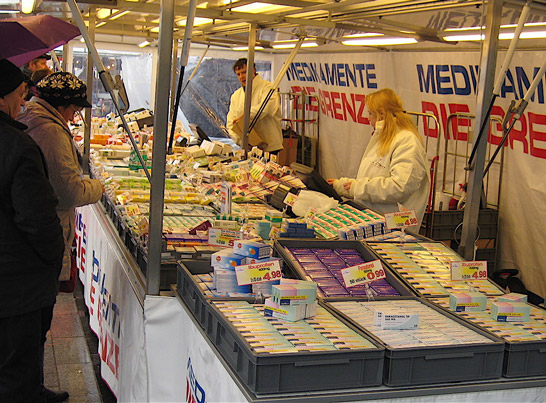Recommendations for the draft Strategic approach to pharmaceuticals in the environment
By Stichting Huize Aarde, The Netherlands, February 21 2018.
The development of an European strategy for pharmaceuticals in the environment is important because it encourages action by governments, institutions and civil society organisations in countries inside and outside Europe. Below we formulate our three main recommendations for the draft strategy: 1) Frame the theme as part of health policy; 2) highlight the environmental cycle of medicines; 3) encourage more financing of source-oriented measures.
Recommendation 1. Frame the theme as part of health policy
Like the vast majority of medicines that are being used for symptom control, almost all the options formulated in this Strategic Approach are meant for symptom control. Only the development of green molecules escapes this approach. An in-depth analysis of different driving forces behind the use of medicines is lacking.
The environmental cycle of medicines is a side-effect of a certain way of dealing with medicines. Just like pesticides, the current medicines are almost without exception toxins that all, alone and together, in pure form and converted, can have negative effects on environmental organisms and humans. In addition in the EU, these substances cause tens of thousands of deaths per year as a result of adverse reactions, misuse and abuse. In the Netherlands, 1.5 million people out of a population of approximately 17 million are addicted to medicines.
A solution for this environmental cycle should be part of a health policy. Synergies should be sought with efforts to prevent the medicalisation of society. We cannot ignore the fact that medicines as a commodity are subject to market forces that help determine their use and hence their emissions. The search for solutions to reduce emissions cannot be achieved without the knowledge and control of these forces.
For example, pharmacists like to see sales of medicines without the intervention of experts to be restricted. In the Netherlands, delicate OTC-substances such as diclofenac are also for sale on the internet, in supermarkets, petrol stations and even in bulk packaging on markets (see photo).
Photo: bulk sales of medicines on the weekly market in Enschede, the Netherlands (Photo: Huize Aarde).
Some other examples of effective, affordable and feasible synergies with efforts to avoid medicalisation:
- In the context of responsible care, pharmacists, as the experts of medicines, can and would like play a greater role in the assessment of polypharmacy medication; the choice of less harmful substances; the introduction of methods for the collection and processing of waste streams (e.g. urine separation), etc.
- Measures to avoid the environmental cycle of pharmaceuticals and AMR micro-organisms could be associated with health promotion programmes such as the roll-out of effective lifestyle improvement methods.
- Use can be made of treatment standards in which conservative prescribing is the norm, e. g.
those of the Dutch general practitioner association NHG (In Dutch).
Recommendation 2. Highlight the environmental cycle
Even though the potential human health effects of this contamination are a driving force behind the policy to be formulated, the whole text emphasises the environmental impact. As a result, the theme becomes an abstract and distant issue that relatively few will support, especially within the health sector. This is a missed opportunity.
We strongly recommend highlighting the environmental cycle of medicines and AMR micro-organisms by indicating that they are found everywhere in drinking water, food and air (agricultural dust). That these contaminants and their transformation products are persistent, accumulate in tissues and act together with other contaminants. By that humans and all other organisms are constantly exposed to a mixture of these contaminants at all stages of life. Therefore, more cross-generational research is needed into the total exposure to this chemical and biological cocktail.
Recommendation 3. More funding of source oriented measures
There is no option for funding research and development (R&D) pilots to tackle the problem at source.
See for example the innovative research into effective and responsible solutions for both reduction of side effects and reduction of harmful emissions through biopharmaceuticals in the EU INTERREG V project
MEDUWA 2017 - 2020.
Another example of a source oriented measure is the creation of incentives for producers and sellers to take back and treat medical waste streams. Such a measure can be very effective if implemented throughout a river basin. In Germany, the Netherlands and Luxembourg research has been done into (high) feasibility and (low) costs for source-oriented separation of contrast media. More research is needed into the costs and feasibility of source oriented separation or treatment of waste streams with cytostatics, antibiotics and synthetical hormones.
Funding of the desired R&D can be provided not only through H2020, but also through subsidies for:
- agriculture, rural development and fisheries;
- education and training;
- trade (environmental criteria);
- LIFE+;
- consumer protection and health;
- urban and regional development;
- cross-border cooperation within the EU (eg. INTERREG);
- cross-border cooperation with non-EU countries.

